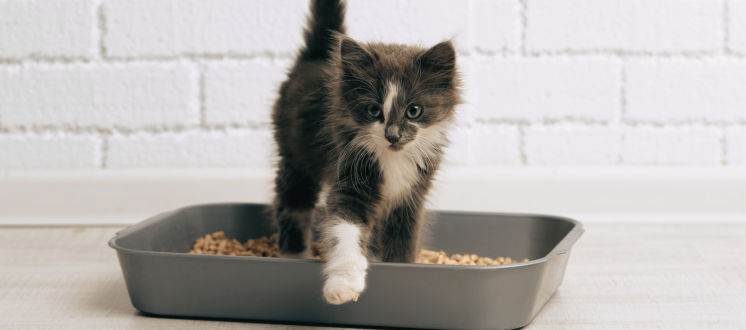Litter Train Your Kitten: A Step-by-Step Guide
A new kitten can bring instant joy to a household. Along with the cuteness and playfulness, however, comes a little work. One of the first things you want to do is litter train the kitten. Here's a simple guide you can follow along with a couple of product recommendations.
1. Choose the Right Litter Box
Ensure it's large enough for your kitten to fully stretch out. Place it in a quiet, private area away from food and water. If you have other pets, the litter box should provide some distance from their usual hangouts. If you have another cat, don't expect the new kitten to use that one. This will create tension right away. Each cat should have its own litter box.
2. Introduce the Litter Box
The litter box should be there as soon as you bring the kitten home. Otherwise, she'll develop bad habits from the onset. Gently place your kitten in the litter box and demonstrate how to use it.
3. Provide Consistent Litter
Use the same type of litter to avoid confusion. Use a quality litter that cats will not mind using and that's easy to scoop. We recommend Fresh Step Clumping Cat Litter. However, you can experiment and find the brand that works best for you. Scoop out soiled litter daily to maintain a clean environment. Cats always appreciate a clean box!
4. Observe and Reward
Watch for Signs. Pay attention to your kitten's natural elimination behaviors. Positive Reinforcement: Reward your kitten with treats or praise when they use the litter box successfully.
5. Clean Accidents Promptly
If your kitten has an accident, clean it thoroughly with an enzymatic cleaner to remove odors. Avoid Punishment. Never punish your kitten for accidents, as it can lead to stress and anxiety.
6. Employ Patience and Consistency
Be Patient: Litter training takes time. Be patient and consistent with your approach. Remember, litter boxes are a human invention for our convenience. Don't expect cats to immediately embrace them. Maintain a regular feeding and litter box schedule.
Additional Tips
Consider Having Multiple Litter Boxes. As noted, if you have multiple cats, each one should have its own litter box. If you have a large home, it's also a good idea to have multiple boxes, perhaps one per floor. This is something you can adjust as you observe how your cat uses each box.
Try a Covered Litter box. Some cats prefer covered litter boxes for privacy. A good choice is Van Ness Pets Odor Control Extra Large Cat Pan.
Know When to Consult a Veterinarian. Most kittens will adjust fairly quickly to using a litter box. If your kitten has ongoing litter box issues, consult with a veterinarian to rule out any underlying health problems.

